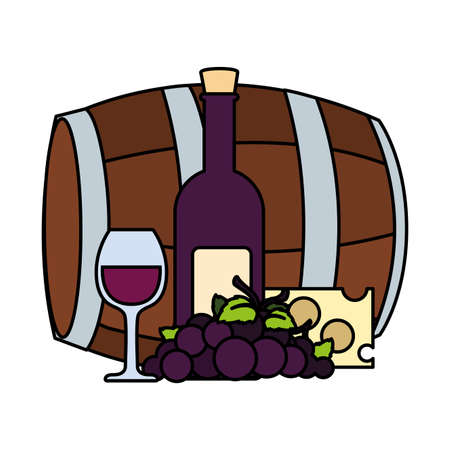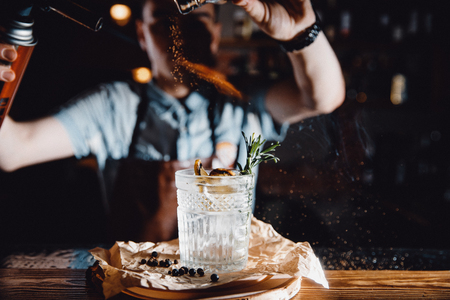Understanding Fractional Ownership
If you’ve ever dreamed of owning a rare bottle of vintage Bordeaux or a cask of single malt Scotch, but balked at the steep price tag, you’re not alone. Enter the world of fractional ownership—a game-changing concept that’s opening doors for everyday investors to get a piece of luxury assets without breaking the bank. Fractional ownership means you buy a share, or “fraction,” of an asset rather than the whole thing. Think of it as crowd-sourcing meets investing: a group of people pool their money to collectively own high-value items like fine wine and whisky, splitting both the costs and the potential profits. This model isn’t new—real estate has been using it for years—but what’s exciting is how it’s now taking off in alternative asset classes that were once reserved for elite collectors and connoisseurs. With platforms leveraging blockchain technology and user-friendly apps, fractional ownership is becoming more transparent, accessible, and secure. In today’s market where inflation eats away at cash and stocks can be volatile, investors are hungry for new ways to diversify. Fine wine and whisky have shown impressive resilience and growth potential, making them attractive alternatives—and thanks to fractional ownership, these once-exclusive markets are now within reach for more Americans looking to build wealth beyond traditional investments.
2. Why Fine Wine and Whisky? The Allure for Investors
Fine wine and rare whisky have long been symbols of sophistication and luxury, but in recent years, they’ve also emerged as compelling alternative investments. For many Americans seeking not only financial freedom but also a sense of prestige, these liquid assets offer a unique blend of stability, status, and portfolio diversification that traditional stocks or bonds rarely provide.
The Unique Value Proposition
Unlike tech stocks or real estate, fine wine and whisky are tangible assets with a finite supply—once a bottle is consumed or a cask is emptied, it’s gone forever. This scarcity factor tends to drive value upward over time, especially for bottles from renowned vineyards or legendary distilleries. Additionally, both wine and whisky mature with age, which can further increase their appeal and potential returns. This aging process not only enhances flavor profiles but often boosts market demand among collectors and connoisseurs.
Key Reasons Investors Are Attracted
| Reason | Description |
|---|---|
| Stability | Historically, fine wine and whisky prices are less volatile than stock markets, offering a hedge against inflation and economic downturns. |
| Prestige | Ownership of prestigious bottles or casks adds social status and personal satisfaction—an investment you can share at your dinner table or display in your home bar. |
| Diversification | These assets don’t move in sync with traditional markets, helping investors spread risk across different asset classes. |
| Tangible Enjoyment | Unlike digital assets, investors can physically possess, taste, or gift these treasures—combining passion with profit. |
| Cultural Appeal | The stories behind legendary vintages or distilleries add emotional value that resonates with American collectors eager for more than just numbers on a screen. |
A New Generation of Investors Steps In
Younger generations—especially millennials—are increasingly drawn to alternative investments that align with their values and lifestyle aspirations. Fractional ownership models now make it possible for everyday Americans to own a stake in bottles that once seemed reserved for the ultra-wealthy. Whether inspired by the dream of hosting unforgettable gatherings or building generational wealth, more investors are uncorking the potential of fine wine and rare whisky.

3. Platforms and Accessibility: Who’s Making It Possible?
The days when fine wine and rare whisky investing were exclusive to millionaires and old-money families are fading fast. Thanks to a new wave of fintech platforms, everyday Americans now have the opportunity to own shares in some of the world’s most coveted bottles and casks—without breaking the bank. These platforms are redefining what it means to build wealth, offering an exciting way to diversify portfolios with assets that were once locked behind velvet ropes.
Major Players Breaking Down Barriers
Several standout companies are leading this democratization of luxury liquid assets. Vint, for example, has emerged as a pioneer in the space, offering SEC-qualified wine and spirits investment opportunities starting at just $50 per share. With a focus on transparency and rigorous asset selection, Vint allows investors to participate in curated collections featuring everything from Bordeaux legends to cult California Cabernets.
On the whisky side, platforms like CaskX and WhiskeyVest have made it possible for Americans to invest directly in aging barrels from renowned distilleries around the globe. These companies handle everything from storage to insurance, letting investors focus on potential returns as their whisky matures—and hopefully appreciates in value.
Fintech Meets Fine Spirits
The success of these platforms lies in their user-friendly digital interfaces, low minimum investments, and robust educational resources. Investors can track performance, learn about provenance, and even participate in community tastings or events—all through their smartphones. This tech-forward approach is attracting a new generation of investors who crave both financial growth and a story worth sharing at dinner parties.
Accessible Investing for All
Ultimately, these fintech innovators are tearing down the walls that kept fine wine and whisky investing out of reach for most Americans. By pooling resources and leveraging fractional ownership models, they’re turning luxury collectibles into accessible, tangible investments—offering everyone a seat at the table (and maybe a glass or two).
4. Benefits and Risks: What Investors Need to Know
Fractional ownership in fine wine and whisky investing has opened up new doors for everyday Americans seeking alternative assets, but like any financial innovation, it comes with both advantages and challenges. Let’s break down what you should consider before pouring your money into this rising trend.
Key Advantages of Fractional Investing
| Advantage | Description |
|---|---|
| Liquidity | Unlike traditional collectibles, fractional platforms often provide secondary markets, allowing investors to buy or sell shares more easily—sometimes within days rather than years. |
| Lower Barrier to Entry | You no longer need tens of thousands of dollars to own a piece of a rare bottle. Many platforms let you start with as little as $50 or $100, making this asset class accessible to younger investors and those building their wealth from scratch. |
| Transparency | Blockchain technology and digital ledgers are increasingly being used to track ownership and transactions, giving investors clear records and reducing the risk of fraud. |
Risks and Challenges You Should Consider
- Market Volatility: The value of fine wine and whisky can fluctuate due to changing tastes, economic cycles, or even scandals affecting a producer’s reputation.
- Lack of Physical Access: Fractional owners rarely have the opportunity to see or touch the bottles they partially own. This can make the investment feel distant compared to tangible assets like real estate.
- Platform Risk: Your investment relies on the stability and integrity of the platform you choose. If the company managing your shares goes under or experiences technical issues, your assets could be at risk.
- Regulatory Uncertainty: The legal landscape around fractionalized collectibles is still evolving in the U.S., which may affect investor protections and tax implications down the road.
Quick Comparison: Pros vs Cons
| Pros | Cons |
|---|---|
| Easier access for all budgets Enhanced liquidity Greater transparency |
Pioneering legal territory No physical possession Reliance on third-party platforms |
The Bottom Line for Everyday Investors
If you’re chasing financial freedom through alternative investments, fractional ownership in wine and whisky offers exciting possibilities—but don’t get swept away by hype. Do your homework, compare platforms, and understand both the upside potential and real risks before diving in. In this rapidly evolving market, knowledge truly is power.
5. Stories from the Field: Real Investor Experiences
Fractional ownership in fine wine and whisky investing isn’t just a buzzword—it’s a movement that has empowered everyday people to participate in markets once reserved for elite collectors. Let’s dive into some real-world stories from American investors who have embraced this innovative approach, highlighting their journeys, wins, and valuable lessons learned.
From Wine Enthusiast to Portfolio Diversifier: Emily’s Journey
Emily, a tech professional from San Francisco, always had a passion for Napa Valley wines but never thought she could afford investment-grade bottles. Through a fractional ownership platform, she invested $1,000 in a curated collection of Bordeaux wines. Within three years, her shares appreciated by 18%, outperforming traditional savings accounts. Emily says, “Fractional ownership made it possible for me to diversify my portfolio with something I love—and earn real returns.” Her main takeaway? Do your homework on the platform’s vetting process and provenance standards before investing.
Whisky Dreams Come True: Mark’s Experience
Mark, a small business owner in Chicago, was intrigued by the rise of rare Scotch as an alternative asset. He joined a whisky investment group that offered fractional cask ownership. One standout moment came when his group’s share in a limited-edition Macallan cask was bought out by an international collector at a 30% premium after just two years. Mark reflects, “It felt great to be part of something bigger—plus, the transparency of quarterly reports kept me informed every step of the way.” His advice? Patience is key; these are long-term plays rather than get-rich-quick schemes.
Learning Through Losses: Sarah’s Cautionary Tale
Not every story is about overnight success. Sarah from Austin invested in a lesser-known whisky brand through a new platform that failed to deliver on its promises. The cask underperformed, and she struggled to resell her shares. Looking back, Sarah notes, “I jumped in too fast without researching the company’s track record.” Her lesson for others: Stick with established platforms and brands with proven demand in secondary markets.
A Community of Knowledge-Sharing
Across these stories, one thing stands out—a growing community spirit among fractional owners. Many investors join online forums or local tasting events organized by platforms, sharing tips and celebrating milestones together. This social aspect adds another layer of value beyond financial returns.
Key Takeaways
Real-life investor experiences show that fractional ownership democratizes access to fine wine and whisky assets while offering meaningful opportunities for both profit and personal growth. Success comes from due diligence, patience, and tapping into the collective wisdom of fellow enthusiasts. As more Americans embrace this trend, the field will only grow richer in stories—and opportunities.
6. Looking Ahead: The Future of Alternative Asset Investing
As fractional ownership in fine wine and whisky investing continues to gain momentum in the US, several emerging trends are shaping the landscape for individual investors. One of the most significant shifts is the integration of technology—platforms now offer seamless access, real-time tracking, and data-driven insights, lowering the entry barriers for everyday Americans. This democratization enables a broader range of people to diversify their portfolios beyond traditional stocks and bonds.
Regulatory Evolution and Investor Protection
The regulatory environment is also evolving as authorities like the SEC keep a close eye on alternative assets. New guidelines are being crafted to ensure transparency, fair pricing, and investor protection. This increased oversight aims to build confidence in fractional models while weeding out bad actors. As rules become clearer, more institutional players may enter the space, further legitimizing these markets and potentially increasing liquidity for all participants.
Impact on Personal Finance Strategies
For those chasing financial freedom, fractional investing in wine and whisky offers a compelling way to diversify risk and tap into markets once reserved for high-net-worth individuals. By owning a piece instead of the whole barrel or case, investors can balance their exposure, potentially smoothing returns during stock market volatility. This aligns with a growing trend toward holistic wealth-building strategies—where passive income streams and non-correlated assets play a central role in long-term planning.
Emerging Trends to Watch
Looking forward, tokenization and blockchain technology could revolutionize how ownership shares are tracked and traded. These innovations promise enhanced security, greater liquidity, and even global marketplaces where collectors from around the world can buy or sell fractional interests instantly. As these tools mature, investors should stay informed about both opportunities and risks—especially as US tax laws and reporting requirements catch up with digital asset innovation.
A Wealth-Building Paradigm Shift
Ultimately, the rise of fractional ownership in fine wine and whisky marks just the beginning of a larger movement in alternative asset investing. For Americans seeking new paths to financial independence, staying agile and educated will be crucial. By embracing these novel investment vehicles with an eye on regulation and market trends, individuals can craft resilient personal finance strategies designed not only for growth—but for true wealth freedom.


